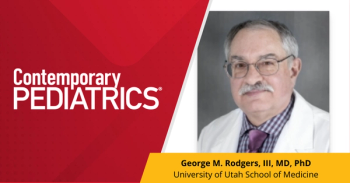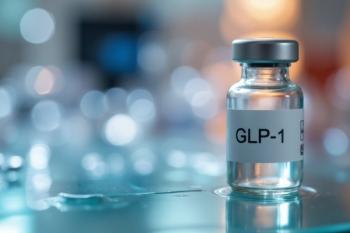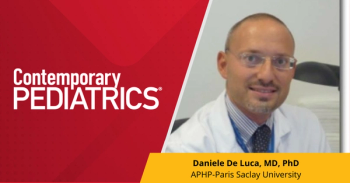
Prenatal teledentistry: because oral-systemic health links begin in the womb
Margaret Scarlett, DDS, and Michelle Strange, MSDH, RDH, outline how a mother's oral health can affect the oral health of her unborn child, and how teledentistry can help mothers access the care they need for themselves and their children.
Introduction:
Today’s emphasis on wellness extends throughout our lifespan. Recent research indicates that oral health is vital to overall health and wellness. This is especially important when it comes to prenatal care.
For example, pregnant women with undiagnosed and untreated periodontal disease are more likely to have preterm and low birth weight babies, leading to several other complications and conditions, such as delayed development and lags in growth.
The effects of the mother’s oral health on her unborn and growing child
Data about the connection between a mother’s oral health on her unborn child continues to emerge, with more recent meta-analyses affirming adverse birth outcomes for both mother and child when there is untreated gum disease. Preeclampsia, preterm delivery, and low birth weight are among the most severe outcomes. To put it simply, the poor health of a mother's oral cavity influences the mother's overall health and, therefore, her child's.1 Here are two examples:
Gingivitis is an inflammation of the gingiva or gums and is common among pregnant women. It can be easily prevented. Porphyromonas gingivalis, a bacteria associated with periodontal disease and other bacteria present in the subgingival plaque of pregnant women, was found to be more abundant in women with preterm birth, for example, than in women with near-term birth.1 More than two-thirds of pregnant women have gingivitis during pregnancy.2
In addition, pregnant women may be more susceptible to caries due to hormonal changes and changes in eating habits. They can then transmit high counts of caries-causing bacteria in their mouths to the mouths of their infants. Mothers with high levels of untreated cavities are three times more likely to have children with cavities than mothers with good oral health.2
Moreover, professional medical organizations recommend oral care during pregnancy; for example, The American College of Obstetrics and Gynecology recommends oral care during pregnancy to benefit both the mother and their unborn infants.3 This was affirmed in 2019, after its original guidance in 2011.
Also, since 2000, the American Academy of Pediatrics (AAP) guidance suggests that infants receive an oral examination by 6 months of age. Since there are not enough oral health professionals to provide care for young children, pediatricians and pediatric nurse practitioners are filling this void.4 So, how can we fill this gap? One word – teledentistry.
Teledentistry can link families to a dental home
Teledentistry, like telehealth, is now available to ensure that more children can easily access oral care from pediatricians and ensure connection to oral health professionals, and a dental home. With teledentistry, moms and babies can access care with a dentist, with the mom holding the baby on her lap without any downtime for transportation or additional time off from work, and without the risk of contagion of the latest COVID-19 variant. They can have face to face contact with a dental professional to meet their needs.
The AAP recommends that providers perform oral health risk assessments at all 6, 9, and 12-month visits.4 These can be conducted with teledentistry or when providing routine childhood vaccinations during well-baby checks.5,6
There is no doubt that oral health impacts the overall quality of life. A healthy mouth, free of disease, ensures the ability to swallow, smile, eat, and feel confident, and improves basic quality of life issues. Furthermore, like a healthy body, prevention of oral disease begins in prenatal care and is especially important in early pediatric well-care.
Moreover, studies found that parents are mostly unable to accurately detect oral health issues in their children because they perceive it primarily based on assumptions. Therefore, teledentistry consultations are paramount in catching and treating problems before they develop in severity.7
Teledentistry links pregnant patients and newborns to pediatricians and pediatricians to oral health professionals
While some areas may lack oral health professionals to treat infants and young children, teledentistry can easily link oral health professionals and the regional pediatric practice schedule. According to a recent report, oral health should be integrated into primary care.8 In fact, teledentistry is the only proven technology that can bridge the prenatal and pediatric care gap.
Teledentistry visits can co-occur as the patient attends another health professional or, if necessary, be pre-recorded for later viewing. Teledentistry can also link pediatric patients to a dental home by age 1, as recommended by the AAP.
The following provides some guideposts for the standard teledentistry virtual consultation, with the mom holding a baby on her lap:
Medical history: including any history of gestational diabetes, preeclampsia, pregnancy hypertension, preterm labor, and any other issues.
Chief complaint, if any.
Oral health risk assessment.4
Summary of oral health findings from observation.
Additional information: including any relevant information from OBGYN, oral professional, or another health professional.
Assessment of oral findings and any impact on function such as feeding, speech, expressions, or other difficulties.
Summary of recommended treatment and/or prevention: for example, fluoride varnish, not putting a baby to bed with formula, avoiding high-sugar drinks, and other recommendations.
Summary of treatment
Recommended next visit (time period).
Why the dental hygienist is an essential part of the multidisciplinary connection
Oral health integration efforts highlight the value of comprehensive care, linking medical and dental professionals. Training curricula, such as Smiles for Life, can provide some basic information, besides the cited AAP resources.8,9
For instance, dental hygienists have a vital role in promoting change in pediatric patients by acting as coaches who can touch on nutrition, encourage good oral hygiene habits, and intervene to correct any bad habits that will lead to an increase in oral and systemic disease. Tremendous success in preventing cavities among school children, has been shown to occur when dental hygienists provide needed care in school-based oral health programs in low-income neighborhoods.10
Dental hygienists can play a crucial role in influencing oral health change by coaching patients, offering positive reinforcement, and supporting parents in guiding their children to continue best practices at home.11
The impact of teledentistry: improved outcomes for mother and child
Thanks to teledentistry, dentists and hygienists can serve as easily accessible counselors to expectant mothers and their medical providers to ensure optimal prenatal oral care.
In our opinion, implementing teledentistry as part of a pediatric oral health risk assessment protocol can help significantly reduce the occurrence of pre-term and low birth weight babies and improve the overall health of mother and child.12,13
Margaret Scarlett, DDS - A dental futurist, Dr. Scarlett is a practicing dentist, author, and consultant for today's digital dentistry innovators. After a long career with the Centers for Disease Control and Prevention, Dr. Scarlett is now assisting today's dental groups and private practices to embrace the digital transformation of dentistry while helping innovative dental technology companies introduce their transformative solutions to DSOs and private practices. She can be reached at mscarlett@scarlettconsulting.com.
Michelle Strange, MSDH, RDH - Michelle is a practicing hygienist with more than two decades of dental expertise, beginning as a dental assistant and completing a bachelor’s degree in health science from the Medical University of South Carolina and a Master’s in dental hygiene education from the University of Bridgeport. She continues to invest in ongoing education, gaining relevant certifications such as her Dental Infection Prevention and Control Certificate. Her community and global endeavors demonstrate her passion for dentistry, from volunteering as a dental hygienist to her worldwide missions. She can be reached at
References
1. Jang H, Patoine A, Wu TT, Castillo DA, Xiao J. Oral microflora and pregnancy: a systematic review and meta-analysis. Sci Rep. 2021:19;11(1):16870. doi:10.1038/s41598-021-96495-1
2. Centers for Disease Control and Prevention. Pregnancy and Oral Health. Accessed July 7, 2022. https://www.cdc.gov/oralhealth/publications/features/pregnancy-and-oral-health.html.
3. Oral care during pregnancy and through the lifespan. American College of Obstetrics and Gynecology. Oral Health Committee. Accessed July 5, 2022. https://www.acog.org/clinical/clinical-guidance/committee-opinion/articles/2013/08/oral-health-care-during-pregnancy-and-through-the-lifespan.
4. Risk assessment tool. American Academy of Pediatrics. Accessed July 7, 2022.
https://downloads.aap.org/AAP/PDF/oralhealth_RiskAssessmentTool.pdf.
5. Oral health practice tools for practitioners. American Academy of Pediatrics. Accessed July 5, 2022. https://www.aap.org/en/patient-care/oral-health/oral-health-practice-tools.
6. Payment of preventive health services. American Academy of Pediatrics. Accessed July 7, 2022. https://www.aap.org/en/patient-care/oral-health/payment-for-oral-health-services.
7. Reissmann DR, John MT, Sagheri D, Sierwald I. Diagnostic accuracy of parents' ratings of their child's oral health-related quality of life. Qual Life Res. 2017. 26(4):881-891. doi: 10.1007/s11136-016-1427-y.
8. Innovations in oral health and primary care integration: alignment with the shared principles of primary care. The Primary Care Collaborative. 2021. Accessed July 27, 2022. https://www.pcpcc.org/ resource/innovations-oral-health-and-primary-care-integration-alignment-shared-principles
9. National oral health curriculum: smiles for life. Society of Teachers of Family Medicine Group on Oral Health. Accessed July 27, 2022.
10. Simmer-Beck M, Wellever A, Kelly P. Using registered dental hygienists to promote a school-based approach to dental public health. Am J Public Health. 2017:107(S1):S56-S60. doi: 10.2105/AJPH.2017.303662
11. Why be a dental hygienist? American Dental Education Association. Accessed July 27, 2022.
12. Corbella S, et al. Adverse pregnancy outcomes and periodontitis: a systematic review and meta-analysis exploring potential association. Quintessence Int.2016;47:193–204. doi: 10.3290/j.qi.a3498
13. Daalderop L, et al. Periodontal disease, and pregnancy outcomes: overview of systematic reviews. JDR Clin. Transl. Res. 2018;3:10–27. doi: 10.1177/2380084417731097.
Newsletter
Access practical, evidence-based guidance to support better care for our youngest patients. Join our email list for the latest clinical updates.












